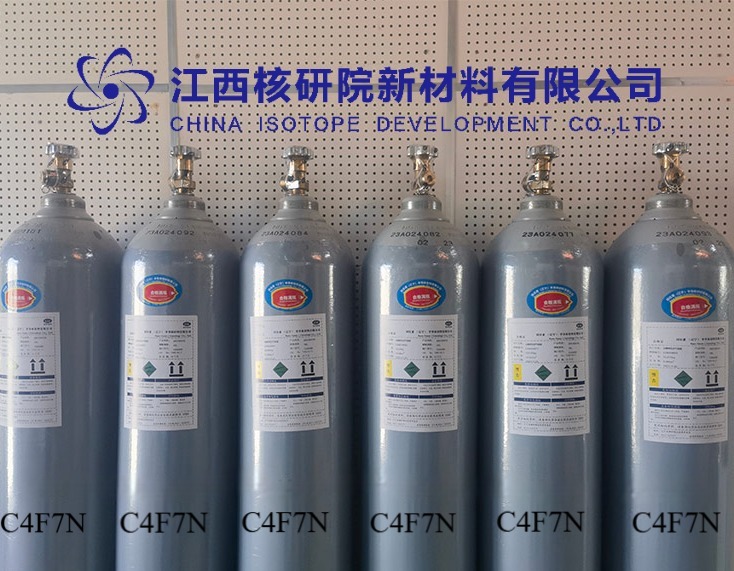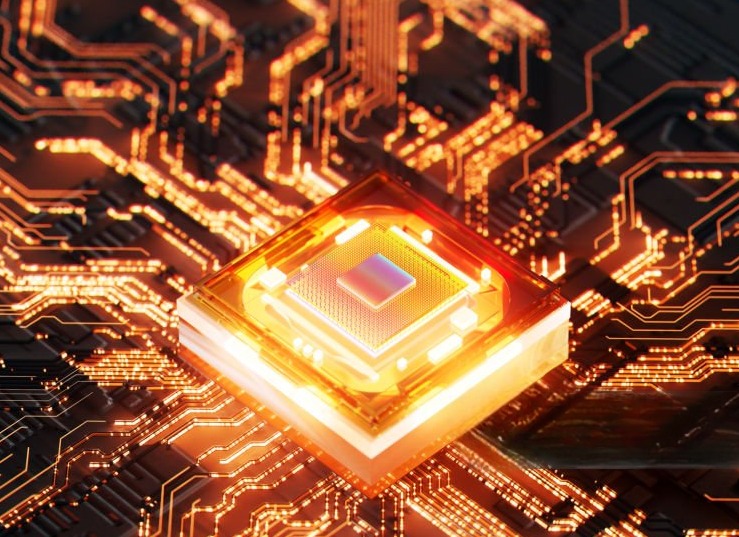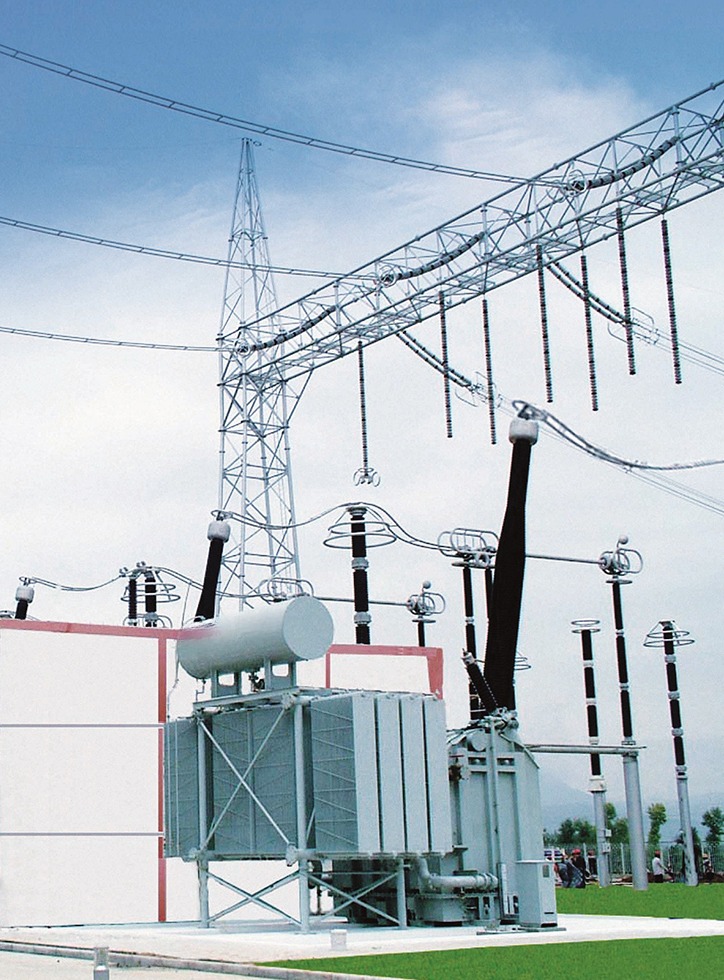Perfluoroisobutyronitrile (C4F7N): The Cutting-Edge Fluorocarbon Gas for Precision Electronics and Environmental Compliance
BY Tao, Published August 28, 2025
Introduction to Perfluoroisobutyronitrile (C4F7N)
Perfluoroisobutyronitrile (C4F7N), also known as heptafluoroisobutyronitrile, is a fluorocarbon specialty gas that represents a significant leap forward in precision electronics and sustainable technology. With over three decades of expertise in specialty gases, I have seen how compounds like C4F7N address the dual demands of high-performance applications and environmental responsibility. Unlike sulfur hexafluoride (SF6), the traditional standard for electrical insulation with a global warming potential (GWP) of 23,500, C4F7N offers a GWP of approximately 2,100, making it a compelling eco-friendly alternative. Its exceptional dielectric properties, chemical stability, and versatility position it as a cornerstone for advanced electronics and green energy systems.
This article delves into the properties, production, applications, and future potential of C4F7N, emphasizing its role in semiconductor manufacturing, high-voltage insulation, and environmental compliance. By combining technical depth with accessible explanations, we aim to showcase how C4F7N is redefining the specialty gas market, supported by the latest research and industry trends.
Chemical and Physical Properties of C4F7N
C4F7N’s molecular structure and physical properties make it uniquely suited for precision applications. Below are its key characteristics:
-
Molecular Structure: C4F7N, with the formula (CF3)2CFC≡N, features a nitrile group (-C≡N) attached to a perfluorinated carbon backbone. This structure enhances its chemical stability and dielectric performance.
-
Physical State: At room temperature, C4F7N is a colorless, odorless gas, easily liquefied under moderate pressure for storage and transport.
-
Boiling Point: Approximately -4.7°C at standard pressure, allowing it to remain gaseous in most operational environments.
-
Dielectric Strength: When mixed with buffer gases like CO2 or N2, C4F7N achieves a dielectric strength up to 2.2 times that of SF6, making it ideal for high-voltage insulation.
-
Global Warming Potential (GWP): With a GWP of ~2,100, C4F7N significantly reduces environmental impact compared to SF6, aligning with regulations like the EU’s F-Gas Regulation (https://eur-lex.europa.eu/eli/reg/2014/517/oj).
-
Thermal Stability: C4F7N resists decomposition at high temperatures, ensuring reliability in plasma etching and arc-quenching applications.
-
Atmospheric Lifetime: At ~30 years, C4F7N’s atmospheric lifetime is far shorter than SF6’s 3,200 years, reducing its long-term environmental footprint.
-
Toxicity: C4F7N is less toxic than some fluorocarbons, but its decomposition products under high-energy conditions require careful handling.
These properties make C4F7N a versatile, high-performance gas for applications demanding precision and sustainability.
Production Methods of C4F7N
Producing C4F7N at ultra-high purity levels (≥99.9%) is critical for its use in electronics and electrical systems. The primary synthesis methods include:
1. Fluorination of Nitrile Precursors
C4F7N is typically synthesized by fluorinating perfluorinated alkene precursors with nitrogen-containing reagents:
[ \ce{(CF3)2C=CF2 + CN- \rightarrow (CF3)2CFC≡N} ]
This process, catalyzed by metal fluorides, requires precise temperature and pressure control to achieve high yields and purity, as detailed in studies on fluorocarbon synthesis (https://www.sciencedirect.com/science/article/abs/pii/S0022113922000876).
2. Electrochemical Fluorination (ECF)
Electrochemical fluorination involves passing an electric current through organic precursors in anhydrous hydrogen fluoride. While effective for producing fluorocarbons, this method is energy-intensive and requires rigorous purification to eliminate impurities, ensuring compatibility with sensitive applications like semiconductor etching.
3. Advanced Purification Techniques
Post-synthesis, C4F7N undergoes fractional distillation and adsorption to achieve ultra-high purity. Companies like Asia Isotope International have developed proprietary purification methods to meet the stringent requirements of the electronics industry, ensuring minimal contaminants that could affect performance.
Emerging research into sustainable synthesis, such as bio-based fluorination, aims to reduce the environmental and economic costs of C4F7N production, enhancing its scalability for global markets.
Applications in Precision Electronics
C4F7N’s high purity and chemical stability make it a critical component in the electronics industry, particularly in semiconductor manufacturing.
1. Plasma Etching for Semiconductor Fabrication
In semiconductor production, C4F7N is used as an etching gas in plasma etching processes to create intricate patterns on silicon wafers. Its high selectivity—ability to etch specific materials without damaging others—ensures precision in fabricating microchips for AI processors, 5G devices, and IoT sensors. Compared to traditional etching gases like CF4, C4F7N offers superior performance and a lower GWP, as noted in recent studies on plasma etching (https://iopscience.iop.org/article/10.1088/1361-6595/acb5e3).
2. Dielectric Insulation in Electronic Components
C4F7N’s high dielectric strength makes it suitable for insulating sensitive electronic components, such as those in high-frequency circuits and power electronics. Its stability under high voltages ensures reliable performance in compact devices, supporting the trend toward miniaturization in electronics.
3. Thin-Film Deposition
In chemical vapor deposition (CVD), C4F7N serves as a precursor for depositing fluorinated thin films, used in protective coatings and insulating layers for semiconductors. Its ability to form uniform, defect-free films enhances the performance of advanced electronic devices, critical for applications like OLED displays and photovoltaic cells.
Applications in Electrical Insulation and Green Energy
C4F7N’s low GWP and excellent dielectric properties position it as a sustainable alternative to SF6 in high-voltage systems, supporting green energy initiatives.
1. Gas-Insulated Switchgear (GIS)
Gas-insulated switchgear is essential for compact, high-voltage power distribution in urban and renewable energy systems. C4F7N, often mixed with CO2 or N2 (e.g., 15-20% C4F7N/80-85% CO2), provides dielectric performance comparable to SF6 while reducing environmental impact. A 2023 study found that a 20% C4F7N/80% CO2 mixture achieves 95% of SF6’s dielectric strength (https://ieeexplore.ieee.org/document/10051234).
2. Circuit Breakers and Arc Quenching
In high-voltage circuit breakers, C4F7N excels at quenching electrical arcs—plasma discharges that occur during circuit interruption. Its thermal stability ensures reliable operation in renewable energy applications, such as wind and solar farms, where robust circuit protection is critical.
3. Gas-Insulated Transmission Lines (GIL)
C4F7N’s high dielectric strength enables compact designs for gas-insulated transmission lines, facilitating efficient power transmission over long distances. This is particularly valuable for integrating renewable energy into urban grids, reducing land use and environmental impact.
4. Environmental Compliance
By replacing SF6, C4F7N reduces greenhouse gas emissions, aligning with regulations like the EU’s F-Gas Regulation and the Kigali Amendment. Its shorter atmospheric lifetime and lower GWP make it a key player in sustainable energy infrastructure.
Additional Applications
C4F7N’s versatility extends beyond electronics and electrical systems:
1. Specialty Chemical Synthesis
The nitrile group in C4F7N enables its use as a precursor in synthesizing fluorinated compounds for pharmaceuticals and agrochemicals. It participates in reactions like nucleophilic additions, producing intermediates for drugs targeting cancer and neurological disorders.
2. Refrigerant Blends
C4F7N is being explored as a component in low-GWP refrigerant blends for industrial cooling systems. Its thermal stability and low toxicity make it a promising candidate for replacing high-GWP hydrofluorocarbons (HFCs), supporting global phase-down efforts.
3. Research Applications
C4F7N is used in laboratory studies of fluorocarbon chemistry and plasma interactions, providing insights into new materials for nanotechnology and energy storage.
Safety and Handling Protocols
C4F7N’s stability reduces some risks, but its handling requires stringent protocols:
-
Storage: Store in corrosion-resistant cylinders (e.g., stainless steel) at low temperatures with inert gas blanketing (e.g., nitrogen) to prevent contamination.
-
Handling: Use explosion-proof equipment and leak-detection systems. Decomposition products under high-voltage or plasma conditions require monitoring.
-
Personal Protective Equipment (PPE): Workers should wear respiratory protection, chemical-resistant gloves, and eye protection.
-
Regulatory Compliance: Adhere to standards like IEC 62271-4 for gas-insulated equipment and local environmental regulations (https://www.iec.ch/publication/60669).
A 2019 SF6 leak in a European substation highlighted the risks of dielectric gases, emphasizing the need for safer alternatives like C4F7N (https://www.reuters.com/article/europe-energy-sf6-idUSL8N26K3R7).
Recent Advances in C4F7N Research
Ongoing research is expanding C4F7N’s applications and improving its production:
-
Mixture Optimization: A 2024 study optimized C4F7N/CO2 mixtures, achieving dielectric performance within 5% of SF6 with a 15% C4F7N blend (https://iopscience.iop.org/article/10.1088/1361-6463/ad1f5c).
-
Decomposition Analysis: Research analyzed C4F7N’s decomposition under arc conditions, identifying non-toxic byproducts and informing safer equipment designs (https://www.sciencedirect.com/science/article/abs/pii/S0016236123004567).
-
Sustainable Synthesis: Pilot projects exploring bio-based fluorination methods are reducing the environmental footprint of C4F7N production, with potential for scalability by 2030.
These advancements highlight C4F7N’s potential to meet performance and sustainability goals.
Market Trends and Economic Significance
The global specialty gas market, including C4F7N, was valued at USD 2.8 billion in 2023 and is projected to reach USD 4.5 billion by 2030, growing at a CAGR of 7.5% (https://www.marketsandmarkets.com/Market-Reports/specialty-gas-market-649.html). C4F7N’s adoption in electronics and green energy is a key driver, fueled by demand for sustainable solutions.
Europe leads in C4F7N adoption due to strict environmental regulations, while Asia-Pacific, particularly China, dominates production. Companies like 3M and Asia Isotope International are scaling up high-purity C4F7N supply to meet global demand, particularly in semiconductors and renewable energy.
Challenges and Future Directions
C4F7N faces challenges that must be addressed for widespread adoption:
-
Production Costs: C4F7N is more expensive to produce than SF6, requiring innovations in synthesis to improve affordability.
-
Equipment Compatibility: Retrofitting SF6-based systems for C4F7N mixtures poses logistical challenges.
-
Regulatory Evolution: Future regulations may demand even lower-GWP alternatives, necessitating ongoing research.
Looking ahead, C4F7N’s role in electronics and green energy will expand. Its use in next-generation semiconductors will support AI and IoT growth, while its application in high-voltage systems will drive renewable energy integration. Advances in recycling and green synthesis will further enhance its sustainability.
Conclusion
Perfluoroisobutyronitrile (C4F7N) is a cutting-edge fluorocarbon gas, offering unmatched performance in precision electronics and environmental compliance. Its high dielectric strength, low GWP, and versatility in semiconductor etching, electrical insulation, and chemical synthesis make it a transformative force in sustainable technology. With over 30 years of expertise in specialty gases, I can affirm that C4F7N’s blend of technical excellence and eco-friendly properties positions it as a leader in the gas insulation and electronics markets. As research and adoption accelerate, C4F7N will shape a greener, more advanced future.
Sources:
-
EU F-Gas Regulation: https://eur-lex.europa.eu/eli/reg/2014/517/oj
-
Fluorocarbon Synthesis Study: https://www.sciencedirect.com/science/article/abs/pii/S0022113922000876
-
Plasma Etching Research: https://iopscience.iop.org/article/10.1088/1361-6595/acb5e3
-
C4F7N Mixture Optimization: https://ieeexplore.ieee.org/document/10051234
-
Decomposition Analysis: https://www.sciencedirect.com/science/article/abs/pii/S0016236123004567
-
SF6 Leak Incident: https://www.reuters.com/article/europe-energy-sf6-idUSL8N26K3R7
-
Specialty Gas Market Report: https://www.marketsandmarkets.com/Market-Reports/specialty-gas-market-649.html
-
IEC 62271-4 Standard: https://www.iec.ch/publication/60669
Would you like a deeper dive into any specific technical parameters or applications?
(Follow up our update articles on www.asiaisotopeintl.com or send your comments to tao.hu@asiaisotope.com for further communications)








